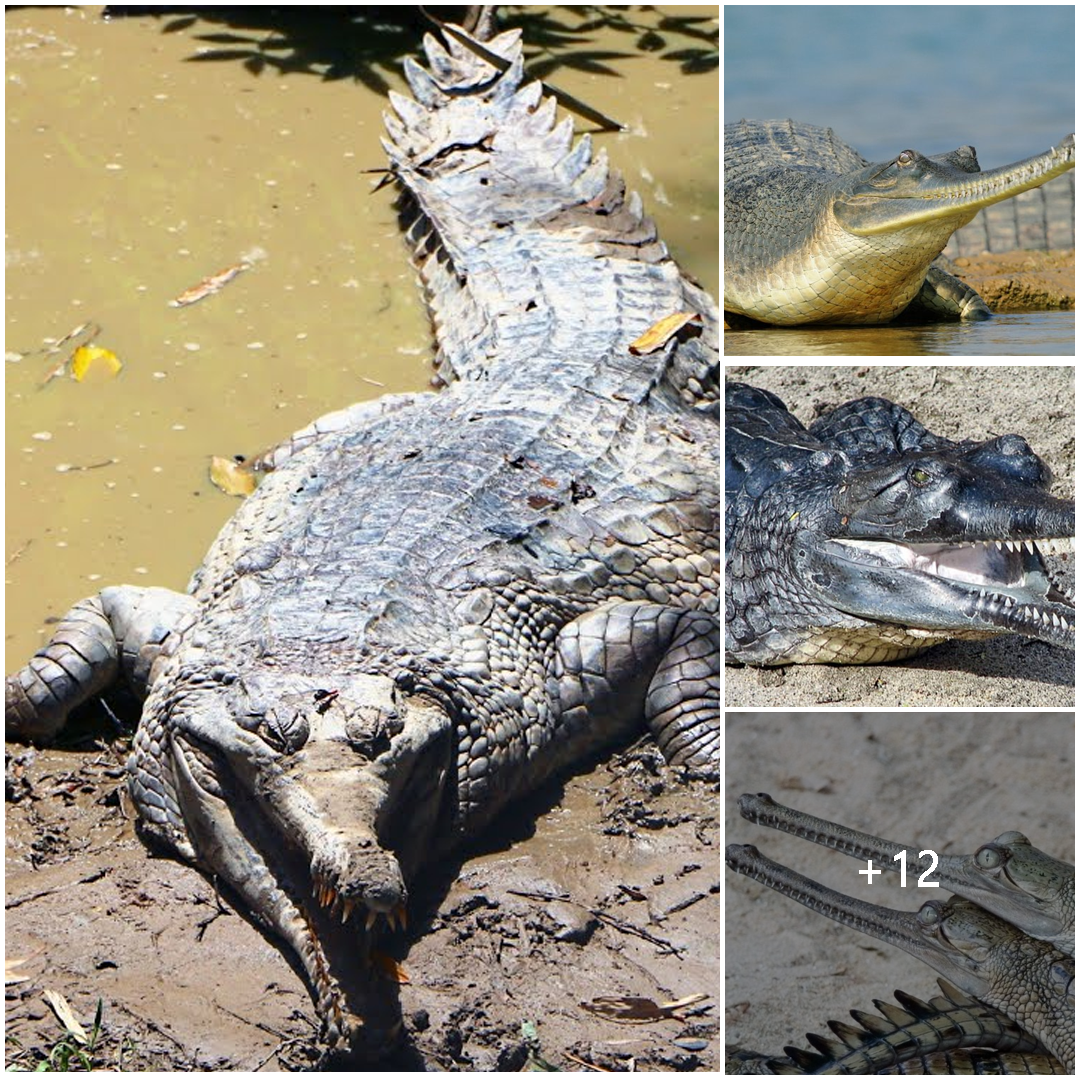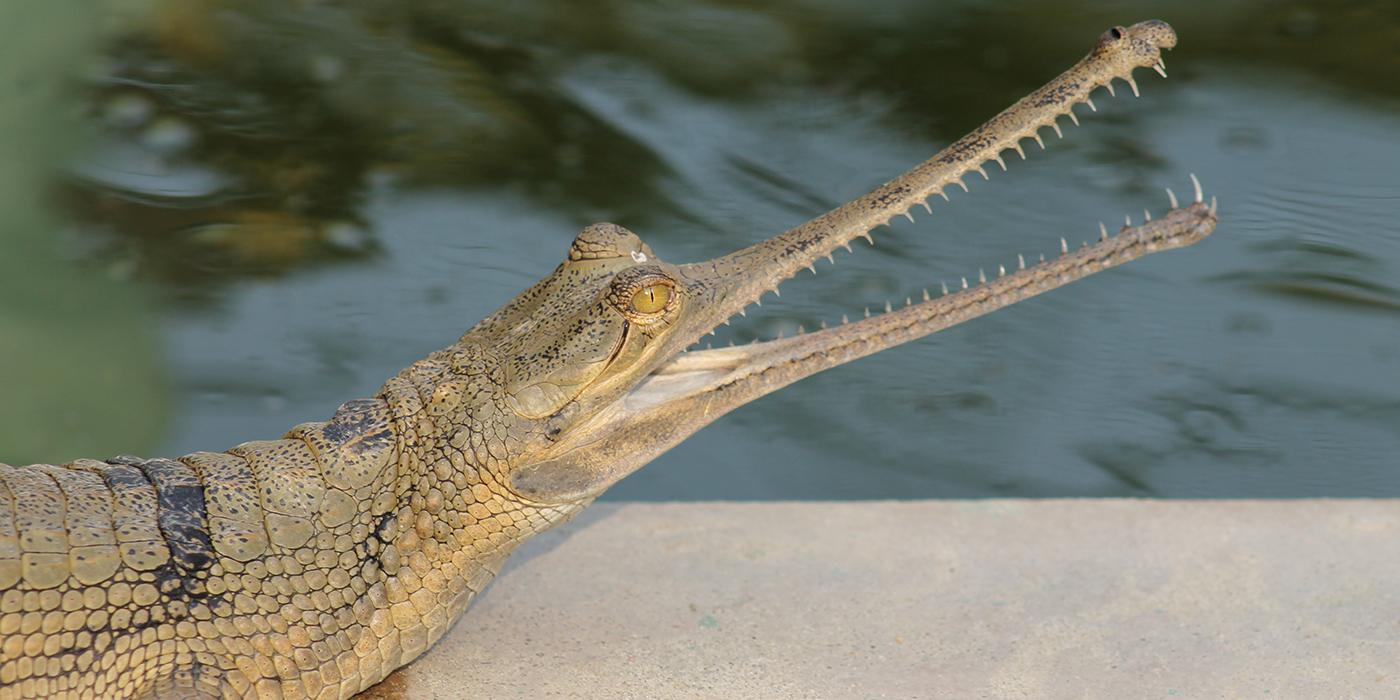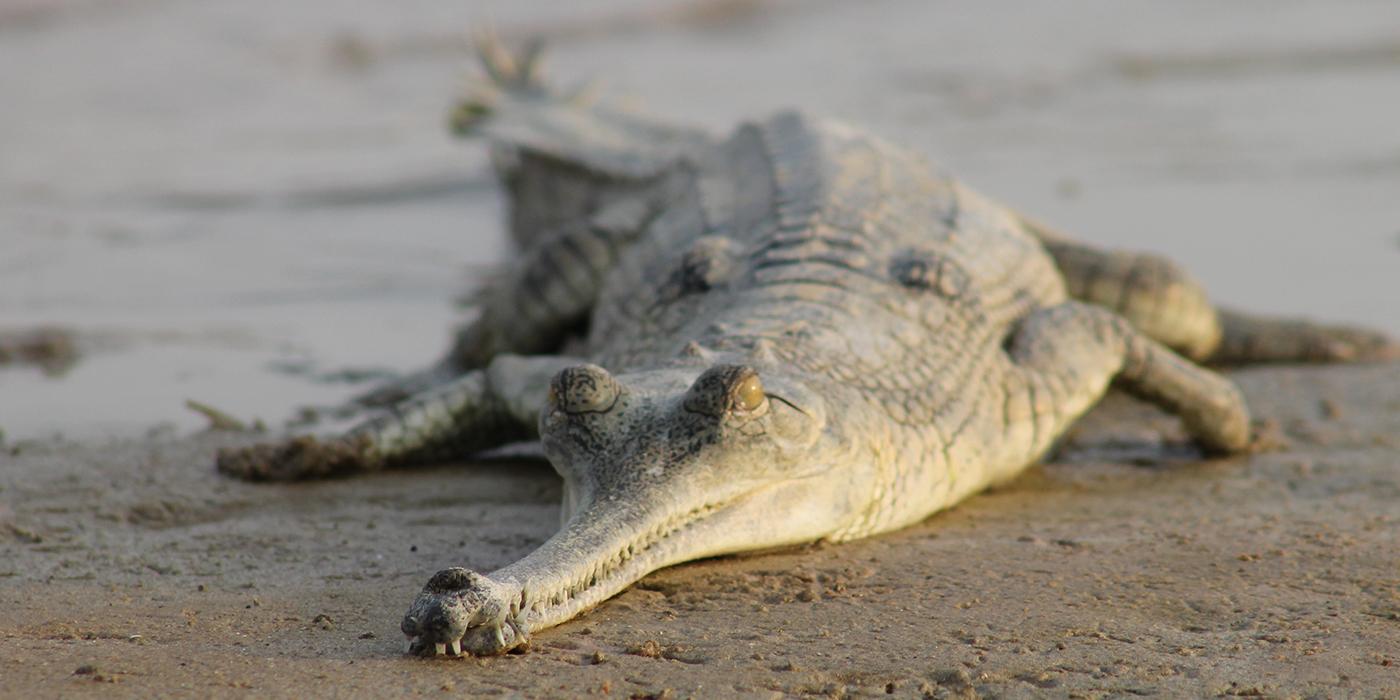
The Majestic Gharial: Guardian of India’s Rivers
The Gharial (Gavialis gangeticus) is a unique and charismatic crocodilian species that inhabits the rivers of the Indian subcontinent. With its long, slender snout and distinctive elongated jaws, the gharial is instantly recognizable and holds a special place in the cultural and ecological landscape of India. In this article, we delve into the fascinating world of the gharial, exploring its appearance, habitat, behavior, conservation status, and the efforts being made to protect this iconic species.
Appearance and Characteristics: The gharial is distinguished by its long, narrow snout, which is lined with numerous sharp teeth and gives the species a distinctive appearance. Adult males can reach lengths of up to 6 meters (20 feet), making them one of the largest of all crocodilian species. The gharial’s elongated jaws are specialized for catching fish, its primary prey, and its streamlined body allows for swift and agile movement through the water. The species is typically olive-green or grayish-brown in color, with lighter undersides and dark crossbands on its body and tail.
Habitat and Distribution: Gharials are native to the freshwater river systems of the Indian subcontinent, including the Ganges, Brahmaputra, and Indus rivers, as well as their tributaries and associated wetlands. They prefer deep, slow-moving stretches of river with sandy banks and abundant fish populations, where they can bask in the sun and hunt for prey. Despite their historical range extending into neighboring countries such as Nepal, Bangladesh, and Pakistan, gharial populations have experienced significant declines and are now largely restricted to protected areas within India.

Behavior and Diet: Gharials are primarily piscivorous, meaning they feed primarily on fish. Their long, slender jaws and sharp teeth are well adapted for catching and consuming slippery prey in the water. Gharials are ambush predators, lying in wait near the water’s edge or partially submerged in the shallows, before lunging forward with lightning speed to snatch unsuspecting fish with their jaws. They are typically solitary animals, although they may congregate in larger groups during the breeding season.
Conservation Status: The gharial is listed as Critically Endangered on the International Union for Conservation of Nature (IUCN) Red List of Threatened Species, with populations declining rapidly in recent decades. The species faces numerous threats, including habitat loss and fragmentation, water pollution, illegal fishing practices, and human-wildlife conflict. Conservation efforts aimed at protecting gharial populations include habitat restoration, captive breeding and reintroduction programs, community education and outreach, and the establishment of protected areas and wildlife sanctuaries.

Conclusion: The gharial is a living relic of India’s ancient rivers, a symbol of resilience and adaptation in the face of environmental challenges. As guardians of the river ecosystem, gharials play a crucial role in maintaining the health and balance of freshwater habitats, and their conservation is essential for the long-term survival of India’s rivers and the myriad species that depend on them. By raising awareness, supporting conservation initiatives, and fostering coexistence between humans and wildlife, we can ensure a brighter future for the majestic gharial and the rivers it calls home.





